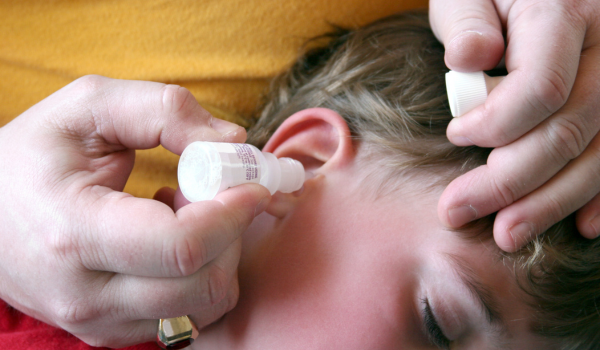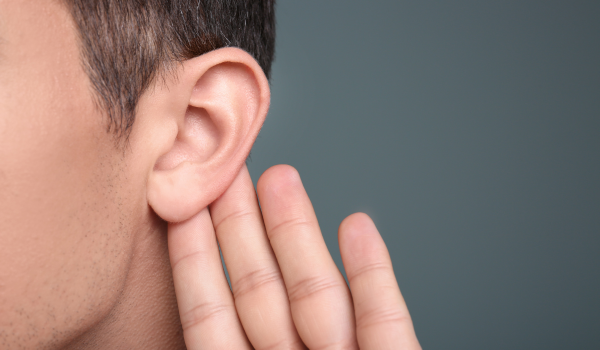.png)
Hearing loss can develop gradually or suddenly, and recognizing the signs is only the first step. To accurately understand what kind of hearing loss someone has—and how severe it is—healthcare professionals use a variety of diagnostic tests and procedures.
This article explores the most common tools used in diagnosing hearing loss, from audiometric tests to brainstem response analysis, and explains what each one measures and why it matters.
Pure-Tone Audiometry
Pure-tone audiometry is the most widely used and standard method for measuring hearing ability.
How it works:
You’ll be asked to wear headphones and listen to a series of tones at different frequencies (pitches) and intensities (volumes). You signal each time you hear a sound, even if it’s very faint.
What it measures:
-
Hearing thresholds across a frequency range
-
The softest sounds you can hear at each pitch
-
Helps determine the degree of hearing loss
Result format:
The outcome is recorded on an audiogram, a chart showing your hearing ability in each ear.
Why it's important:
This test identifies which frequencies are affected and how much amplification you may need through hearing aids or other devices.
Bone Conduction Testing
Bone conduction testing helps distinguish sensorineural from conductive hearing loss.
How it works:
A vibrating device is placed behind the ear (usually on the mastoid bone) to send sound directly to the inner ear, bypassing the outer and middle ear.
What it reveals:
-
If hearing improves with bone conduction, the issue lies in the outer or middle ear
-
If both air and bone conduction thresholds are poor, the problem is likely in the inner ear
Why it matters:
Differentiating between types of hearing loss ensures the correct treatment plan, such as surgery for conductive loss or hearing aids for sensorineural issues.
Speech Audiometry
Speech audiometry tests how well you can hear and understand spoken words, which is often more relevant than pure tones in real life.
How it works:
You will listen to spoken words or sentences at different volumes and repeat what you hear. Some versions include background noise to test performance in challenging environments.
Main components:
-
Speech recognition threshold (SRT): the softest speech you can recognize
-
Word recognition score (WRS): the percentage of correctly repeated words at a comfortable loudness
Why it's useful:
This test evaluates your ability to distinguish speech, which affects daily communication more than just hearing tones.
Tympanometry
Tympanometry assesses how well the eardrum and middle ear are functioning.
How it works:
A small device is placed in the ear canal to change air pressure and measure the movement of the eardrum (tympanic membrane) in response.
What it checks for:
-
Fluid in the middle ear
-
Perforated eardrum
-
Eustachian tube dysfunction
-
Ossicle bone problems
Why it's important:
This test helps identify conductive hearing loss and whether it’s caused by infection, blockage, or damage in the middle ear.
Acoustic Reflex Testing
Also known as stapedial reflex testing, this exam evaluates the reflexive response of middle ear muscles to loud sounds.
How it works:
A sound is played into the ear, and the machine checks whether the stapedius muscle contracts in response.
What it indicates:
-
Neurological function of the auditory pathway
-
Possible presence of tumors or nerve damage
Why it's relevant:
This test helps detect issues that may not be obvious with standard hearing tests, such as auditory nerve disorders or brainstem pathway malfunctions.
Otoacoustic Emissions (OAE)
OAE testing detects sounds generated by the inner ear’s outer hair cells in response to stimuli.
How it works:
A soft sound is introduced into the ear through a tiny probe. If the inner ear is functioning properly, it will produce a faint echo back—called an otoacoustic emission.
Why it’s done:
-
Commonly used in newborn hearing screening
-
Identifies cochlear damage even before noticeable hearing loss
What an absent OAE suggests:
Possible sensorineural hearing loss or damage to the inner ear
Why it’s valuable:
OAE is quick, non-invasive, and helpful for detecting early-stage hearing issues, even in people who cannot respond verbally (e.g., infants or those with disabilities).
Auditory Brainstem Response (ABR)
ABR evaluates the neural pathways from the ear to the brainstem, useful in both diagnosis and neurological assessment.
How it works:
Electrodes are placed on your head and ears to measure electrical activity in response to sound clicks played through earphones.
What it reveals:
-
Nerve integrity between the cochlea and brainstem
-
Auditory neuropathy spectrum disorder (ANSD)
-
Acoustic neuromas or other nerve-related issues
Used for:
-
Testing infants
-
Diagnosing hidden hearing loss
-
Evaluating patients with neurological symptoms
Tuning Fork Tests
Simple yet informative, tuning fork tests help differentiate between conductive and sensorineural hearing loss.
Two main types:
-
Rinne test: Compares air and bone conduction in each ear
-
Weber test: Detects one-sided hearing loss by placing a vibrating fork on the forehead
Why still used:
Though less precise than audiometry, these tests are quick, low-cost tools often used by general practitioners during initial exams.
Visual Reinforcement Audiometry (VRA)
Used for infants and toddlers, VRA measures hearing by observing behavioral responses to sound.
How it works:
A child sits between speakers and is trained to look toward the sound. When they do, they are rewarded with a lighted toy or animation.
Useful for:
-
Children aged 6 months to 2.5 years
-
Determining minimum hearing thresholds
Why it’s effective:
Children respond naturally without needing to speak or press buttons, making it ideal for early intervention screening.
Play Audiometry
For children too old for VRA but too young for adult-style tests, play audiometry is used.
How it works:
The child is taught to perform a task (e.g., dropping a block in a bucket) when they hear a sound.
Why it's important:
Makes hearing testing fun and engaging for children aged 2.5 to 5 years, while still collecting accurate results.
Questionnaires and Case History
Before any technical test begins, clinicians often review your medical history and conduct interviews to understand your hearing challenges in daily life.
You may be asked about:
-
Exposure to loud noise
-
Family history of hearing loss
-
Past ear infections or surgeries
-
Medications you’re taking
Why it matters:
Understanding your background helps tailor diagnostic testing and guides treatment recommendations.
When to Get Tested
If you experience any of the following, it may be time to consult a hearing specialist:
-
Ringing in the ears (tinnitus)
-
Trouble understanding speech, especially in noise
-
Frequently asking people to repeat themselves
-
Feeling that people are mumbling
-
Sudden loss of hearing in one or both ears
Early testing can lead to better treatment outcomes and reduce long-term impact on communication, emotional health, and safety.
Final Thoughts
Diagnosing hearing loss goes far beyond simply asking “Can you hear this?” With today’s technology, healthcare professionals can accurately determine what type of hearing loss you have, how severe it is, and what treatments will be most effective.
From audiometry and tympanometry to brainstem response and otoacoustic emissions, each test plays a vital role in building a clear picture of your auditory health.
If you're noticing signs of hearing decline, don’t wait. Early diagnosis is key to preserving your hearing and quality of life.


.png)
.png)
.png)
.png)


